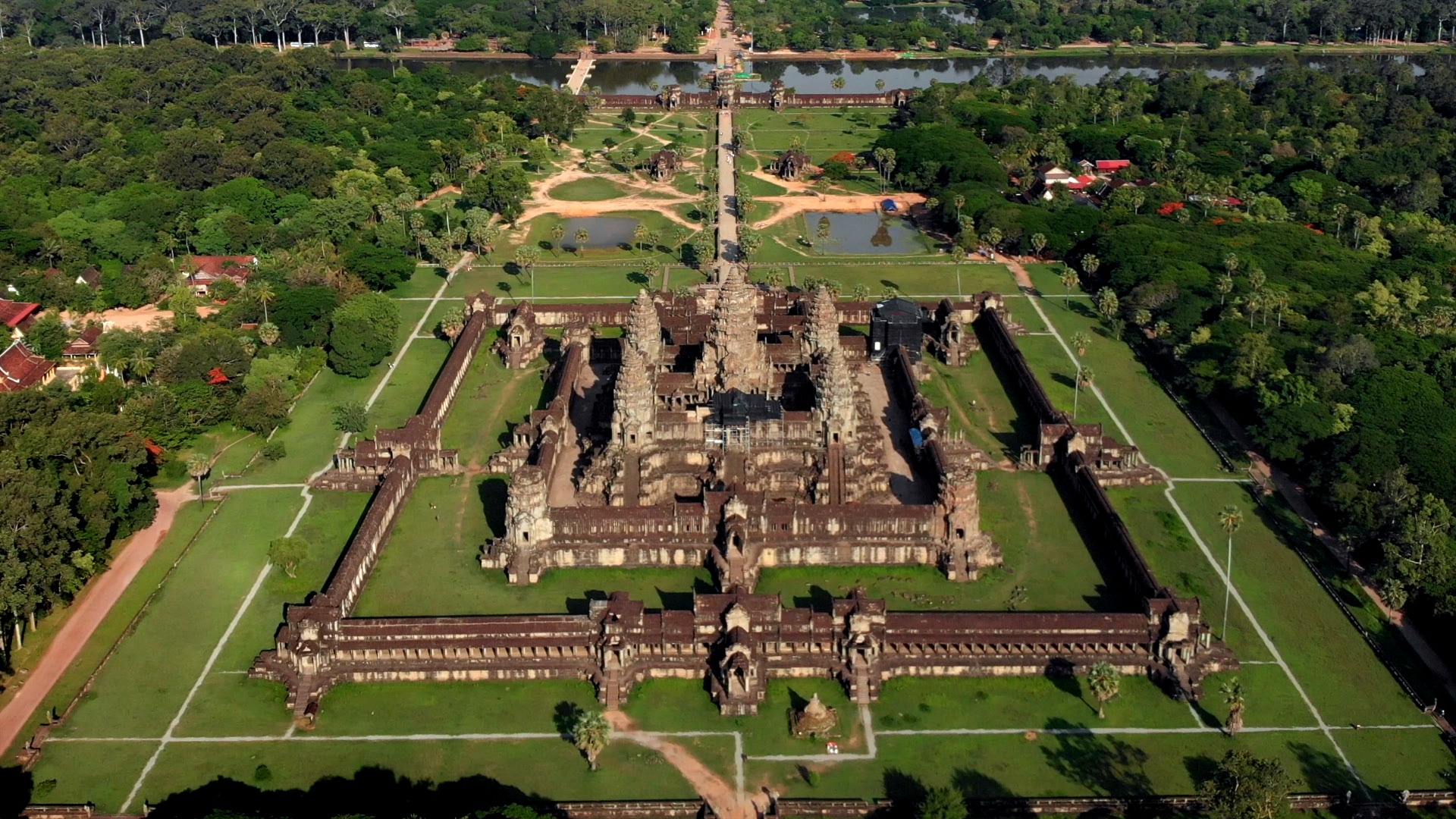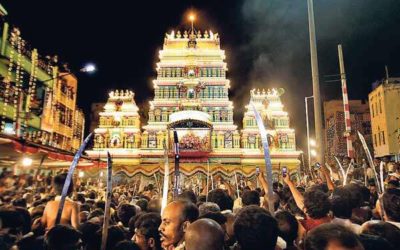Angkor Wat! There are not enough words to describe this ancient beauty. With its soaring towers and vast colonnades, the temple spans an area of nearly 500 acres, its magnificence easily rivaling any one of the Seven Wonders of the World. The massive temple complex is perfectly arranged into a mandala – a diagram of the cosmos itself. The grandeur is enough to make your heart sing and your eyes pour. You could simply lose yourself in the intricacies of the bas-relief carvings of the Hindu epics, the Ramayana and Mahabharata, layering the walls of the stone structure. This once gold coated temple still stands as the world’s largest religious monument. However, the story behind this engineering marvel and spiritual palace mostly remains a mystery to the Western world.
Misconceptions About the Temple’s History
While it is well established that Angkor Wat was built with an Indian influence, legends of the origins of the sacred temple found in Cambodia run far and wide. One popular belief is that Suryavaraman II, a supposed Khmer usurper king, built the megalithic structure as a mausoleum for himself. Documentaries, such as, How to Build Angkor Wat, claim that not only was it built as his gateway into heaven, but that Suryavaraman II did it to exert his autocratic dominance over his people and “establish his position as a God King.” While these archaeologists recognize that it was built as a tribute to Lord Vishnu, they create a false sense of insecurity in the king towards the God. These stories are just that — stories.
Angkor Wat’s Indian Roots
In reality, it was not built as a mere tribute to Vishnu but as an earthly abode for the God. The temple was built with such precision and forethought that it included 18 different astronomical configurations, which together, created a structure that aligned with God’s stipulated directions. Within the sanctum of the highest tier of the temple, there was an Ashtabhuja Vishnu (eight-armed Vishnu), now at the main entrance, who is almost identical to the deity within the sanctum of the Ashtabhuja Perumal Temple of Kanchi. How did this Hindu temple bearing astonishing similarities to temples in South India end up in Cambodia?
Shaiva Beginnings – Pallava Initiations
According to Bhagwan Sri Paramahamsa Nithyananda reading from the Akashic Records (the cosmic archives of everything that has happened and everything that will happen), the Khmer people of Cambodia and the Pallava people of India initially had a simple trading relationship. Eventually, the relationship grew and the two cultures began to merge. The Pallava king, Suryavaraman, married the Khmer tribe’s daughter and was invited to settle down in Cambodia and build a kingdom there. As a result, the construction of Angkor Wat began.
What is most astonishing is the revelation that much of the temple complex was actually carved, assembled, numbered, and dismantled in India – in Mahabalipuram to be exact – and transported by boat to Cambodia. Not only did they send the stones, but they also sent craftsmen, tools, and even highly trained elephants for the building process. Bhagwan clarifies that the proof for this can be found on the stones which all contain barcodes to identify the location of the stone in the structure. Furthermore, there is a tribute to the temple’s origins carved into one pillar of the complex.
Merging Distinct Cultures – A Hallmark of Hindu Rulers
Once the base structure of the temple was fully assembled, the elaborate bas-reliefs were carved into the structure. In true Pallava fashion, they dedicated the carvings to the local tribes and kings, integrating their clothing, lifestyle, hair-style, and jewelry to honor the local culture, while also incorporating their own physical attributes into the friezes. Suryavaraman was able to merge the two cultures and create such beautiful harmony in his kingdom by giving the local culture tremendous respect, Bhagwan explains.
After that, the whole Cambodian population learned the skills to
build temples and continued the art throughout. Eventually, the kings
converted their religion to Buddhism and their people followed, and
as a result, the Buddhist imagery that we find today, was built into
the architecture.



0 Comments